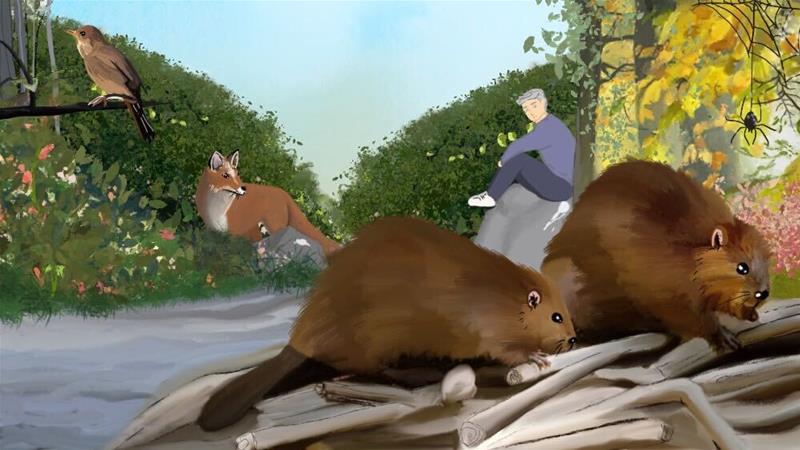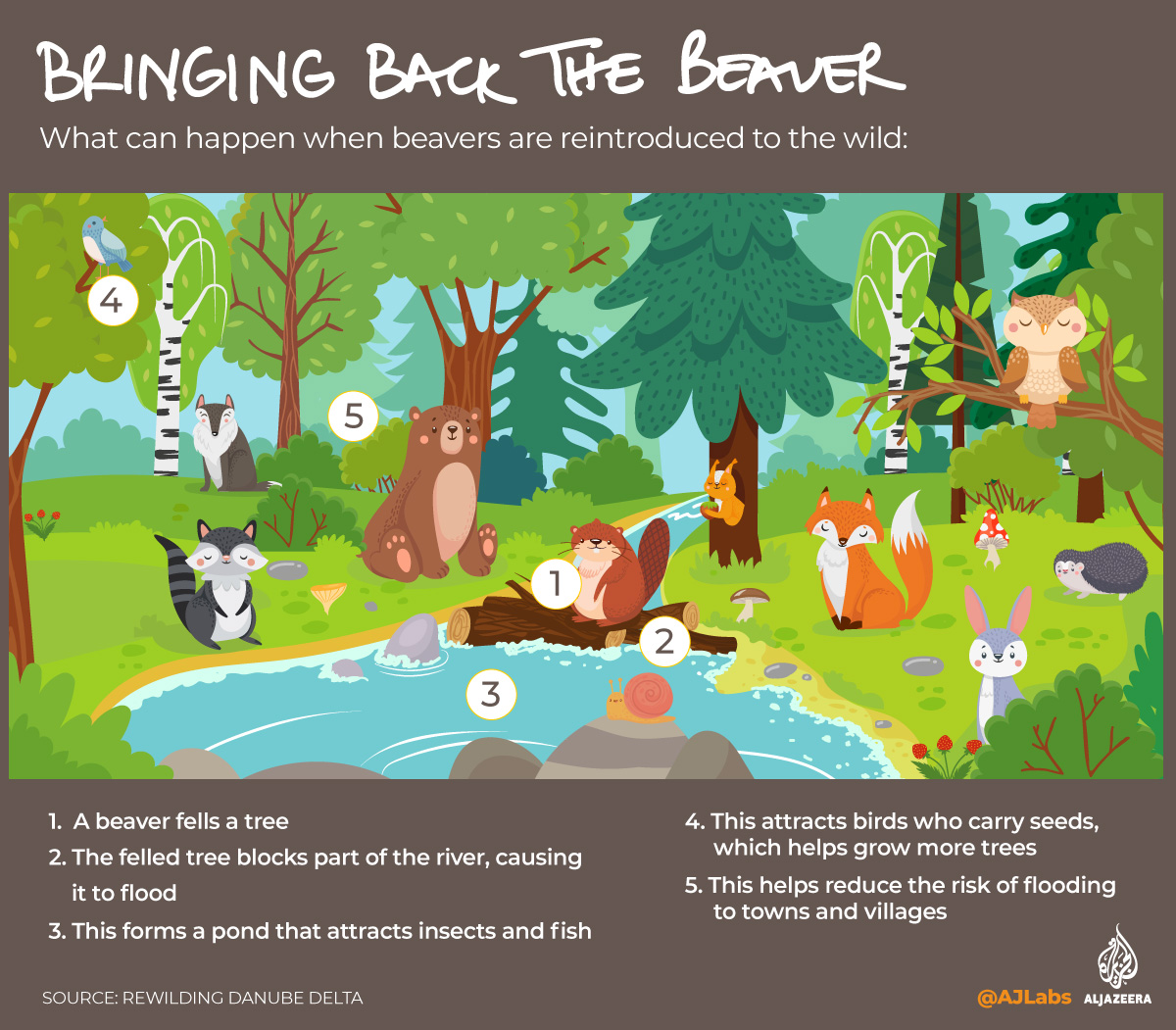
Posted on 09/03/2020 10:30:40 AM PDT by SJackson
Rewilding is not about restoring the past, but about proactively seeking solutions for a world in environmental crisis.

There is something deeply heartening about an extinct native species being reintroduced to its former habitat. In the United Kingdom, there are several of those stories.
The last time storks were recorded breeding in the UK was way back in 1416 on top of a cathedral in Edinburgh. This year, nests on the Knepp Estate in West Sussex produced the first wild-born chicks in 600 years. The parent birds were bred in captivity and released into the wild as part of a reintroduction project started in South East England.
Another project that began 30 years ago in the Chiltern Hills in southern England is also reaping conservation rewards. In 1990, 13 red kites were flown in from Spain as part of a plan to reintroduce the species to the area after its population had all but disappeared across the UK. Today, nearly 2,000 breeding pairs - almost 10 percent of the entire global population - soar above virtually every English county.
And in Kent, there will soon be a more distant beastly association with the British Isles' wildlife past. Wild bison are set to return for the first time in 6,000 years with the release of a small number planned for 2022. The first of the endangered animals will be brought in from Poland or the Netherlands.

The benefits of beavers It has been 400 years since beavers lived naturally in the wild in England. Now a group that was discovered in Devon in 2013 has been granted permission to stay after a five-year reintroduction trial showed their dam-building activities were good for wildlife.
It was found that other creatures, including fish, insects, birds and water voles had benefitted from the beavers' presence and that their dams had reduced the risk of flooding to some human homes.
"This is the most groundbreaking government decision for England's wildlife for a generation," Peter Burgess, director of conservation at Wildlife Trust, told Reuters news agency.
"Beavers are nature's engineers and have the unrivalled ability to breathe new life into our rivers and wetlands."
There are issues of conflict, especially with farmers concerned about flooding caused by beavers. So efforts are under way to craft an acceptable management approach for an ancient species returning to a very different landscape from the one it used to live in.
The same goes for the possible reintroduction of lynx and wolves. The strategy of returning apex predators clearly has to be very carefully assessed.

Doubling woodlands To tackle ongoing climate and environmental catastrophes, there are calls for similar ambitious initiatives to help beef up woodland cover in England. And to do it not by planting trees, but by allowing natural regeneration.
Britain is one of Europe's least-wooded countries, and environmental charity Rewilding Britain wants woodland cover to double in a decade, which would help absorb 10 percent of UK emissions.
"Our ancient woodlands are only absent because we've destroyed them and continue to work hard to prevent their return through over-cutting, over-mowing and over-grazing," said Rebecca Wrigley, Rewilding Britain's chief executive.
"If we let them, millions of trees would plant themselves across most of Britain."
Wrigley cites Norway as an example, where flourishing broadleaved forests in the coastal south - once as deforested and as bare as much of Britain today - demonstrate the potential of natural regeneration.
From bison to birch woods, rewilding as a concept is not about restoring times past, but proactively seeking a solution for a world mired in environmental crisis.
What? Wild boars are fun when they charge you. Either pull your protection pistol (which I was never packing when I needed it) and shoot it, or climb a tree , or jump a barbed wire fence. They are easier to escape from than bears. The tree climbing doesn’t work well for bear escapes, but I don’t know about barb wire fences.
I’m thinking of feral hogs in the southern US. Very destructive, and too many of them.
Werewolves... hounds of the Baskerville... perfect hair and chow mein...
Yes, it is amazing how much of a pest beavers can be.
Also Dire Wolves and Woolly Rinos, Short Faced Bears, and the old stands by Woolly Mammoths and Mastodons, throw in a few Giant Sloths and the odd Smilodon
26 posts on a beaver thread, and I’m the first to post this. https://www.youtube.com/watch?v=AvWfbIe4X_4
The standards at Free Republic have fallen.
Well I guess the Brits better start tearing down their wind generators if they expect to keep their birds of prey!
The dead bird fines will be a revenue source, eventually. Honestly, when restoring species not from 50-200 years ago, but centuries and millenia, it’s all guesswork. Just fine anyone in the way. Windmill kills birds, fine said windmill, pay the fine through rates.
Will you settle for an elephant in a Sasquatch costume?
Perhaps they should restore Norsemen.
I can attest there are feral hogs in the southern Gila National Forest. Definitely hogs and not javalinas.
Presumably they descended from escaped domestic hogs of early ranchers and became feral after many generations of wild breeding.
They could import some Angles and Saxons.
My wife and I just made some killer bison spaghetti sauce the other night. The bell peppers were picked right from the patio pots.
Heh... nothing says 'natural habitat' like a plebescite on which species to try to reintroduce. Hippies.
They might want to review the video of the woman last week thrown about by a bison like a rag doll.................
Tis a sad state of affairs indeed!
Some of the pictures in that graph seem a little off. Or is “wildcat” the British term for members of the weasel family, while “lynx” refers to a canine with a fluffy tail?
Disclaimer: Opinions posted on Free Republic are those of the individual posters and do not necessarily represent the opinion of Free Republic or its management. All materials posted herein are protected by copyright law and the exemption for fair use of copyrighted works.